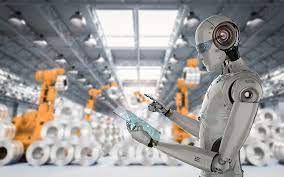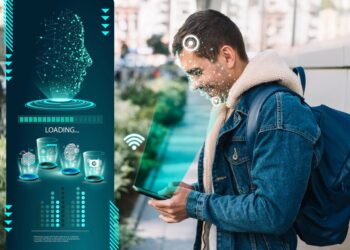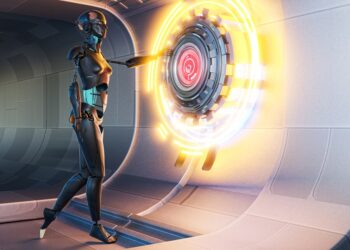The Future of AI and Robotics in Manufacturing: Revolutionizing the Industry
In recent years, the manufacturing industry has witnessed a technological revolution with the advent of artificial intelligence (AI) and robotics. The use of these technologies has transformed the way manufacturing plants operate, and it has become increasingly clear that they will play an even more significant role in the future of manufacturing. In this article, we will discuss the benefits of AI and robotics in manufacturing, current trends in the industry, and what the future may hold.
Benefits of AI and Robotics in Manufacturing
The benefits of AI and robotics in manufacturing are numerous, with improved productivity and efficiency being the most notable. AI-powered machines can analyze large amounts of data and make decisions based on that data, leading to improved efficiency and reduced downtime. In addition, robotics can perform repetitive tasks with a high degree of accuracy and consistency, reducing the need for human labor and the associated costs.
Another significant benefit of AI and robotics in manufacturing is improved safety. Robots can perform dangerous tasks that are hazardous to humans, reducing the risk of injury or death in the workplace. Additionally, robots can be used in environments that are harmful to human health, such as areas with high levels of radiation or toxic chemicals.

Current Trends in AI and Robotics in Manufacturing
One of the most significant trends in AI and robotics in manufacturing is the increasing use of collaborative robots or cobots. These robots are designed to work alongside human workers, performing tasks that are repetitive or dangerous, while humans focus on tasks that require higher-level cognitive skills. Cobots are easy to program and operate, making them an attractive option for small and medium-sized manufacturers.
Another trend is the use of mobile robots that can move around the factory floor and perform a variety of tasks. These robots can transport materials, tools, and finished products, freeing up human workers to focus on more complex tasks. Some mobile robots are equipped with AI, allowing them to make decisions based on their surroundings and adapt to changing conditions.
The use of AI and machine learning is also becoming increasingly prevalent in manufacturing. AI-powered machines can analyze large amounts of data, identifying patterns and anomalies that humans might miss. This data analysis can be used to optimize processes, improve quality control, and reduce waste.
The Future of AI and Robotics in Manufacturing
The future of AI and robotics in manufacturing is bright, with several exciting developments on the horizon. One of the most promising areas of research is the use of AI in predictive maintenance. Predictive maintenance involves using data analysis to predict when machines will require maintenance, reducing the risk of unexpected breakdowns and downtime.
Another exciting development is the use of AI and robotics in additive manufacturing or 3D printing. AI can be used to optimize the design of parts, while robots can be used to perform complex tasks such as layering and welding. This combination of AI and robotics could lead to a significant increase in the speed and accuracy of 3D printing, making it a viable option for mass production.
The use of AI and robotics in quality control is another area with significant potential. AI-powered machines can analyze data from sensors and cameras, identifying defects and anomalies that might be missed by human workers. This data analysis can be used to improve quality control processes, leading to higher-quality products and reduced waste.
The use of AI and robotics in manufacturing is also expected to lead to more flexible production lines. Robots can be quickly reprogrammed to perform different tasks, allowing manufacturers to respond to changes in demand or changes in product design. This flexibility could lead to a more agile manufacturing industry that can quickly adapt to changing market conditions.
Conclusion
AI and robotics are set to revolutionize the manufacturing industry, leading to improved productivity, efficiency, and safety. Current trends in the industry, such as the use of collaborative robots, mobile robots, and AI-powered machines, are just the beginning of what we can expect in the future. As AI and robotics become more advanced, we can expect to see even more benefits, such as predictive maintenance, improved quality control, and more flexible production lines.
However, it is important to note that the adoption of AI and robotics in manufacturing will also have implications for the workforce. While these technologies will undoubtedly improve productivity and efficiency, they may also lead to job displacement. As such, it is crucial that manufacturers consider how they can reskill and retrain their workforce to ensure they remain relevant in an increasingly automated world.
In addition, there are also ethical considerations to be taken into account when it comes to the use of AI and robotics in manufacturing. For example, there is a need to ensure that these technologies are used in a way that is safe and does not pose a threat to human workers. There is also a need to consider the potential for bias in AI algorithms and ensure that they are designed and trained in a way that is fair and equitable.

Despite these challenges, the future of AI and robotics in manufacturing is undoubtedly exciting. The potential for increased productivity, improved efficiency, and more flexible production lines is immense, and it is clear that these technologies will play a vital role in the future of manufacturing. As such, it is essential that manufacturers embrace these technologies and work to address any challenges that arise along the way. By doing so, they will be well positioned to thrive in an increasingly competitive global marketplace.
Overall, the future of AI and robotics in manufacturing is likely to bring about a significant transformation in the industry. Manufacturers who invest in these technologies are likely to see significant benefits, both in terms of productivity and competitiveness. However, it is important that they do so in a way that is responsible, ethical, and takes into account the needs of their workforce.
One potential way to address the workforce implications of AI and robotics in manufacturing is to focus on reskilling and upskilling. This could involve investing in training programs to help workers develop new skills that are more in line with the needs of an increasingly automated manufacturing environment. By doing so, manufacturers can help ensure that their workers remain relevant and valuable in the face of technological change.
Another potential solution is to focus on creating new job opportunities that are more closely aligned with the needs of an automated manufacturing environment. For example, there may be a need for workers to oversee and manage the robots and AI-powered machines, or to develop and maintain the software and algorithms that drive these technologies.
















